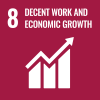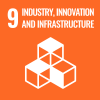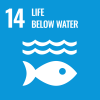
Coastal communities across the Philippines are highly vulnerable to the impacts of climate change, including warming waters, rising sea levels, ocean acidification, and increased storm frequency and intensity. Given these challenges, there is a critical need to develop and implement innovative, ecosystem-based solutions to enhance the climate resilience of communities whose safety, livelihoods, and food security are deeply intertwined with the health of coastal ecosystems.
This four-part video series explores ecosystem-based adaptation (EbA) and highlights how coastal communities in Saint Bernard, the Philippines are utilizing EbA approaches to protect and restore coastal ecosystems and secure livelihoods for local communities. The videos were developed as part of a project that prioritizes nature-based solutions to address climate change and its impact on the coastal communities of Saint Bernard.

- Video 1 introduces the project, highlighting the vulnerability of Saint Bernard to climate change and exploring how nature-based solutions are crucial in places like Saint Bernard.
- Video 2 focuses on why ecosystems need to be protected and restored as way to sustain communities—in this case, the mangroves of Saint Bernard—as an example of EbA, highlighting them as “living seawalls” that provide multiple benefits to the community.
- Video 3 shows seaweed farming and regenerative aquaculture as examples of how EbA can be viable economically and environmentally, highlighting them as potential livelihood options that help mitigate climate change.
- Video 4 discusses why EbA should be prioritized for the future of people and the planet and the steps policymakers and leaders can take to support EbA.





